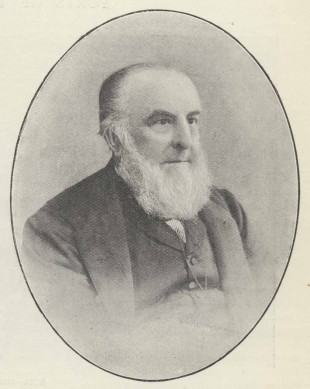…where east meets west
- Home
- Brief History
- The Greenwich Meridian
- Greenwich
(1675–1958) - Herstmonceux
(1948–1990) - Cambridge
(1990–1998) - Outstations (1822–1971)…
- – Chingford (1822–1924)
- – Deal
(1864–1927) - – Abinger
(1923–1957) - – Bristol & Bradford on Avon
(1939–1948) - – Bath
(1939–1949) - – Hartland
(1955–1967) - – Cape of Good Hope
(1959–1971)
- Administration…
- – Funding
- – Governance
- – Inventories
- – Pay
- – Regulations
- – Royal Warrants
- Contemporary Accounts
- People
- Publications
- Science
- Technology
- Telescopes
- Chronometers
- Clocks & Time
- Board of Longitude
- Libraries & Archives
- Visit
- Search
People: Edwin Dunkin
| Name | Dunkin, Edwin |
||
| Place of work | Greenwich | ||
| Employment dates |
21 Aug 1838 – 25 Aug 1884 |
||
| Posts | 1838, Aug 21 |
Computer (Planetary and Lunar Reductions) | |
| 1840, Nov 1 |
Assistant (Magnetic) |
||
| 1845, Oct |
Assistant (Astronomical) |
||
| 1871, Apr 1 |
First Class Assistant (following regrading exercise) |
||
| 1881, Aug 15 |
Chief Assistant | ||
| 1884, Aug 26 |
Retired |
||
| Born | 1821, Aug 19 |
||
| Died | 1898, Nov 26 | ||
| Family connections | Brother Richard Dunkin employed as a Computer (1838–1847), Father William Dunkin (d.1838) had been employed as a Computer on the Nautical Almanac |
||
| Known addresses | 1838 |
5 Park Street. Later renamed Greenwich Park Street. House demolished in the 1870s, to make way for the railway extension |
|
| 1838–1839 | 10 Crooms Hill Grove | ||
| 1839–1846 | 5 St Marys Place, Greenwich Road. Later known as 20 Greenwich High Road, now demolished | ||
| 1846 1858 | 14 Cottage Place. Renamed c.1899 as 81 Dutton Street, now demolished | ||
| 1858–1859 | 7 Royal Circus Street (Circus Street). No 7 remained as No 7 after the 1890s renumbering of the road | ||
| 1859–1871 | 22 Royal Circus Street (Circus Street) Renumbered in the 1890s as No. 2 | ||
| 1871–1898 |
Kenwyn, 14 Kidbrooke Park Road. Renumbered as 27 in about 1889 | ||
Desparate for suitable employment for the two boys, the family sought the advice of their father’s old friend, the Cornishman Davies Gilbert, (a former President of the Royal Society, former Chairman of the Observatory’s Board of Visitors and still a current and active member of the Board), who promised to do what he could to help. He wrote to Stratford asking for his assistance. Although there were no immediate jobs on offer at the Nautical Almanac Office, Stratford arranged for the boys to be examined by one of his assistants and subsequently recommended them to George Airy, the Astronomer Royal, who was recruiting Computers for the Planetary and Lunar Reductions. Having interviewd the two boys, Airy then took them both on on a temporary basis.
When in 1840, the Admiralty decided to establish the Magnetical and Meteorological Observatory on a more permanent basis; Dunkin was one of two new assistants recruited to run it. He retained this role until William Richardson, a long established Astronomical Assistant, was forced out at the end of October 1845 as a result of a scandal surrounding his personal life. Unlike the Magnetic Assistant posts, those of the Astronomical Assistants were permanent (established). When the Assistants’ pay scales came to be restructured in 1871, Dunkin was the third most senior assistant after Dunkin and Glaisher. Together with William Ellis, he was regraded as a First Class Assistant.
When Christie was promoted from Chief Assistant to Astronomer Royal on 15 August 1881, Dunkin was promoted to fill his place. His appointment was unusual in that it broke with the convention that had been in place since 1835 of appointing exceptional young maths graduates from Cambridge to the post. Given that Dunkin was not far off retirement at the time of his promotion, his colleagues at the Observatory were hopeful that his replacement would also come from within. It wasn’t to be. Dunkin turned out to be a one off exception, with the pattern of recruiting Cambridge graduates restarting when he retired. His replacement was Herbert H. Turner who had gained the second best maths degree in the year he graduated. In April 1884, a few moths before he retired, Dunkin became President of the Royal Astronomical Society for the usual period of two years. In this capacity, he became a member of the Observatory’s Board of Visitors, but since the Royal Warrant of 1858 prevented him from taking a seat on the Board while still working at the Observatory, he was only able to attend the 1885 Visitation.
For details of the different roles Dunkin had whilst at the Observatory, the obituaries (below) should be consulted.
Obituaries
By Henry Hollis. The Observatory, Vol. 22, p. 49-52 (1899)
Further Reading
Dunkin, Edwin, P. D. Hingley, T. C. Daniel, and Allan Chapman. A Far Off Vision: A Cornishman at Greenwich Observatory : Auto-Biographical Notes. [Cornwall]: Royal Institution of Cornwall, 1999.
© 2014 – 2025 Graham Dolan
Except where indicated, all text and images are the copyright of Graham Dolan
